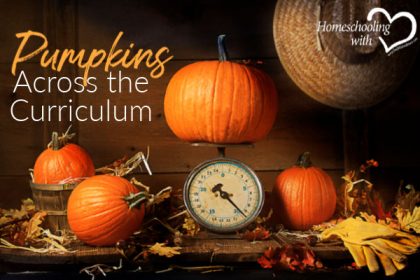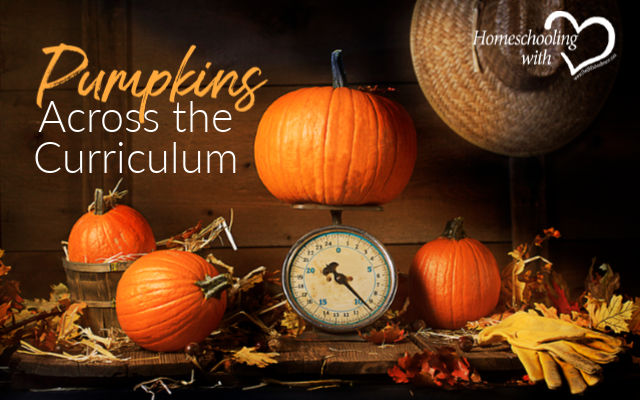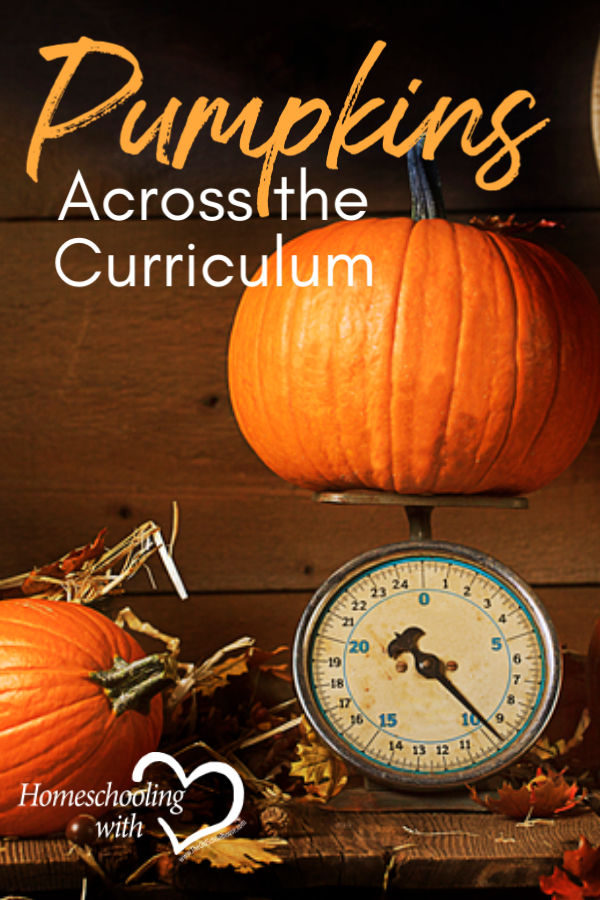Pumpkins Across the Curriculum


Even though it is October, we are still trying to settle into the new school year. Sometimes it takes a long time to find the right rhythm, especially if you have introduced new subjects and activities. You can easily get overwhelmed with your daily schedule. To alleviate the stress, it can be helpful to put aside your standard curriculum for a day or two and focus on something else, something seasonal.
Fall is here, and we are now surrounded by the wonderful things that symbolize the season like the beautiful changing colors of the leaves on the trees and the cool crisp air. One other item that epitomizes the season is the lowly pumpkin. Why not spend a little time celebrating fall by incorporating pumpkins into your curriculum? If you don’t already have a pumpkin, begin with a trip to a farm or your local grocery store to get one. Here are a few suggestions for how to include pumpkins in your lessons.
Art: Instead of decorating the pumpkin itself, treat the pumpkin as art. Put it on a table for everyone to see. Discuss the shape and color. Then have your kids draw or paint their own interpretation of the pumpkin.
History: Have your children research which states produce the most pumpkins and then locate those states on a map. What other countries produce pumpkins? Locate those countries on a globe.
Language Arts: Have your kids write a poem about the pumpkin. If it is age-appropriate, you can first introduce alliteration, metaphor, or simile, and then challenge your kids to write a poem with some of these elements. Additionally, there are several storybooks with pumpkin themes that would be appropriate for younger kids. Your local library may have some available.
Mathematics: Weigh your pumpkin. Then, research the current record for the largest pumpkin. Compare the record to your pumpkin. Approximately how many of your pumpkins would it take to equal the weight of the record holder?
Science: Have your kids research the nutritional profile of pumpkins. Then have them find other foods with similar nutrients. For younger kids, discuss the difference between a fruit and a vegetable. Depending on the type of pumpkin you have and whether you want to cut it up, you may wish to purchase some canned pumpkin for a cooking project. Pumpkin pie, muffins, cheesecake, and cookies are all great options.
Whether you choose to do these suggestions or come up with your own, I hope you enjoy fall with some pumpkin fun.
Heidi Kinney is a freelance writer and editor. Her background includes professional teaching in the area of mathematics, as well as writing and editing for several educational publishers. She has been homeschooling her children since 2007. She shares homeschool resources and lessons on her website, SharedLessons.org.












































